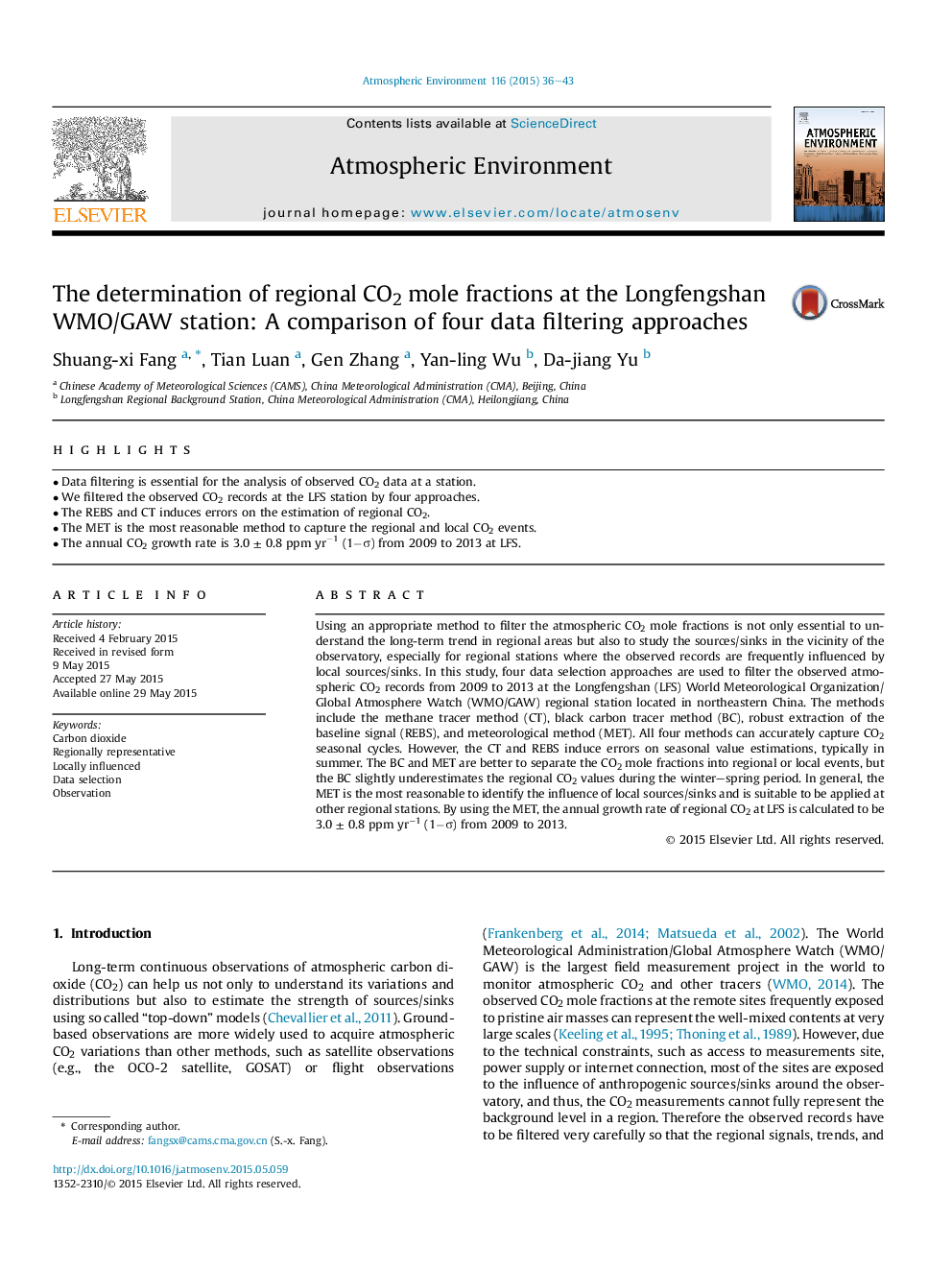| Article ID | Journal | Published Year | Pages | File Type |
|---|---|---|---|---|
| 4438113 | Atmospheric Environment | 2015 | 8 Pages |
•Data filtering is essential for the analysis of observed CO2 data at a station.•We filtered the observed CO2 records at the LFS station by four approaches.•The REBS and CT induces errors on the estimation of regional CO2.•The MET is the most reasonable method to capture the regional and local CO2 events.•The annual CO2 growth rate is 3.0 ± 0.8 ppm yr−1 (1−σ) from 2009 to 2013 at LFS.
Using an appropriate method to filter the atmospheric CO2 mole fractions is not only essential to understand the long-term trend in regional areas but also to study the sources/sinks in the vicinity of the observatory, especially for regional stations where the observed records are frequently influenced by local sources/sinks. In this study, four data selection approaches are used to filter the observed atmospheric CO2 records from 2009 to 2013 at the Longfengshan (LFS) World Meteorological Organization/Global Atmosphere Watch (WMO/GAW) regional station located in northeastern China. The methods include the methane tracer method (CT), black carbon tracer method (BC), robust extraction of the baseline signal (REBS), and meteorological method (MET). All four methods can accurately capture CO2 seasonal cycles. However, the CT and REBS induce errors on seasonal value estimations, typically in summer. The BC and MET are better to separate the CO2 mole fractions into regional or local events, but the BC slightly underestimates the regional CO2 values during the winter–spring period. In general, the MET is the most reasonable to identify the influence of local sources/sinks and is suitable to be applied at other regional stations. By using the MET, the annual growth rate of regional CO2 at LFS is calculated to be 3.0 ± 0.8 ppm yr−1 (1−σ) from 2009 to 2013.
